Frida Baby NoseFrida (Manual Tube Version)
Electric NoseFrida
Hand-Pump Nasal Aspirator
Other Recommendations For A Congested Baby
I’ve panic-bought multiple nose aspirators out of desperation when my baby has had congestion (yes, I’ve chosen the 4 a.m. Amazon delivery option many times). Some worked fine, some my husband couldn’t stomach, and one that, for me, worked wonders.
If you’re in the throes of caring for a sick baby and desperate to help them breathe easier, the truth is: you can’t magically clear every bit of congestion. You do have to ride it out. But some booger suckers work better than others, and even a few minutes of temporary relief can make the difference between another hour of holding them upright in the chair and finally laying them down in the crib to sleep.
3 Popular Baby Nose Aspirators Compared
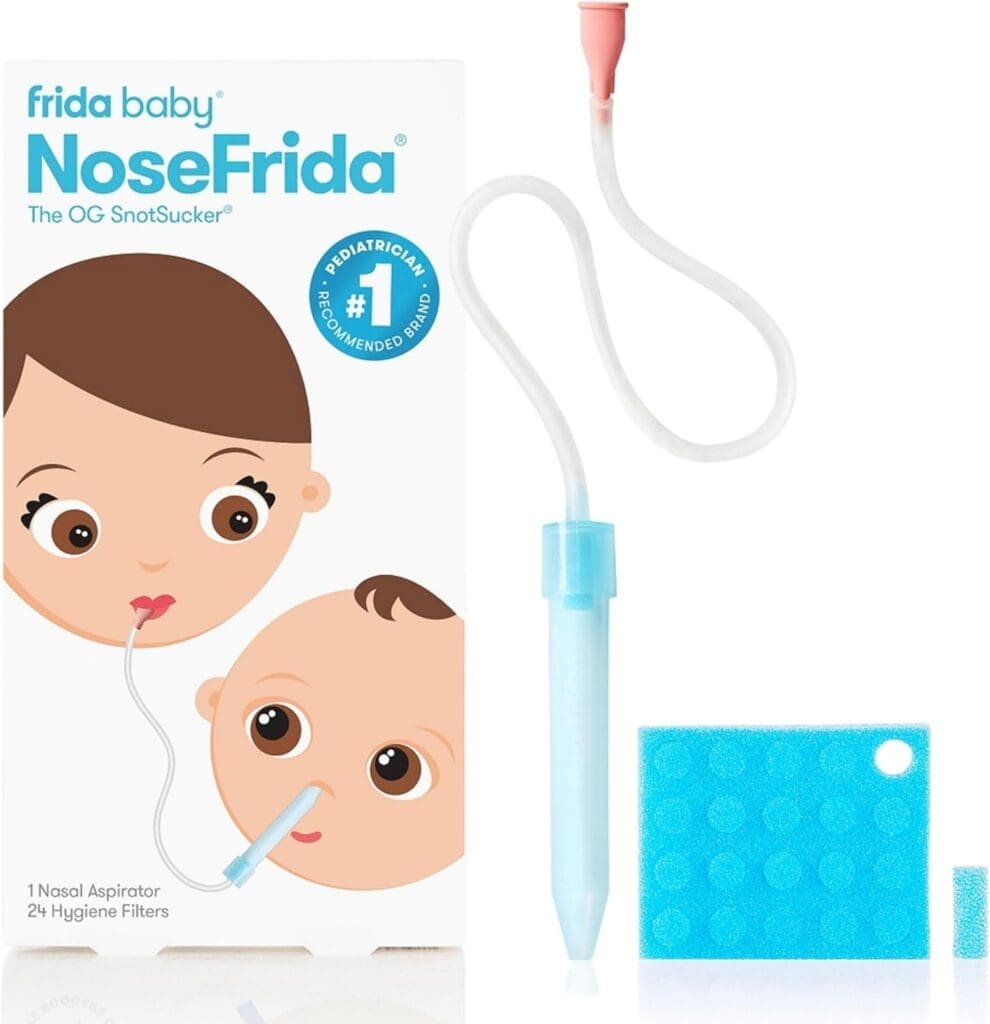

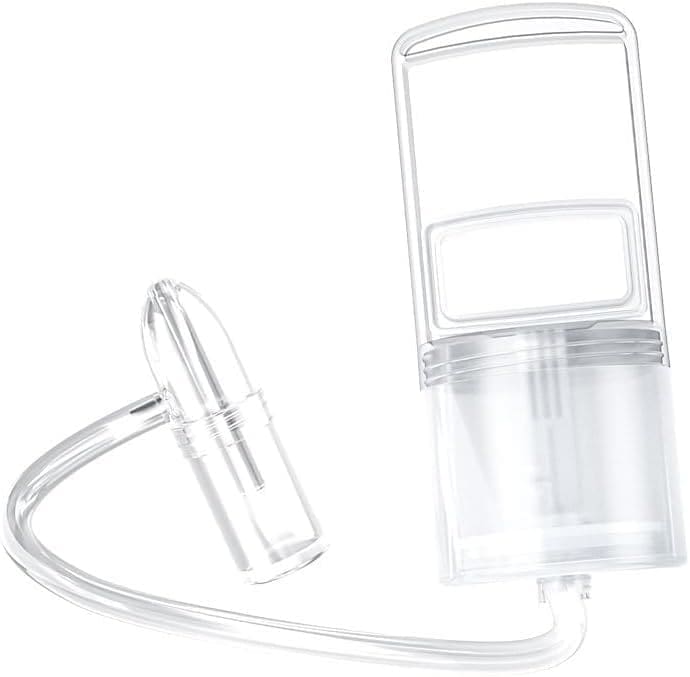
Frida Baby NoseFrida – Manual Tube Version (Runner Up)
- Type: Tube-style, mouth-powered aspirator
- Rating: 4/5
- Pros:
- Simple, affordable, and widely trusted
- Disposable filters keep things hygienic (or so they say)
- Always ready. No batteries or charging
- Cons:
- Effectiveness depends on your suction strength
- Some parents dislike the mouth-to-tube concept

If you’re considering the manual tube-style aspirator, here’s what to know. Compared to the electric model, it delivers stronger suction for stubborn congestion. However, the tubing can bend over time, which makes it harder to get consistent pull.
The red mouthpiece also detaches easily— especially with a curious baby— which can mean frequent reassembly mid-use.
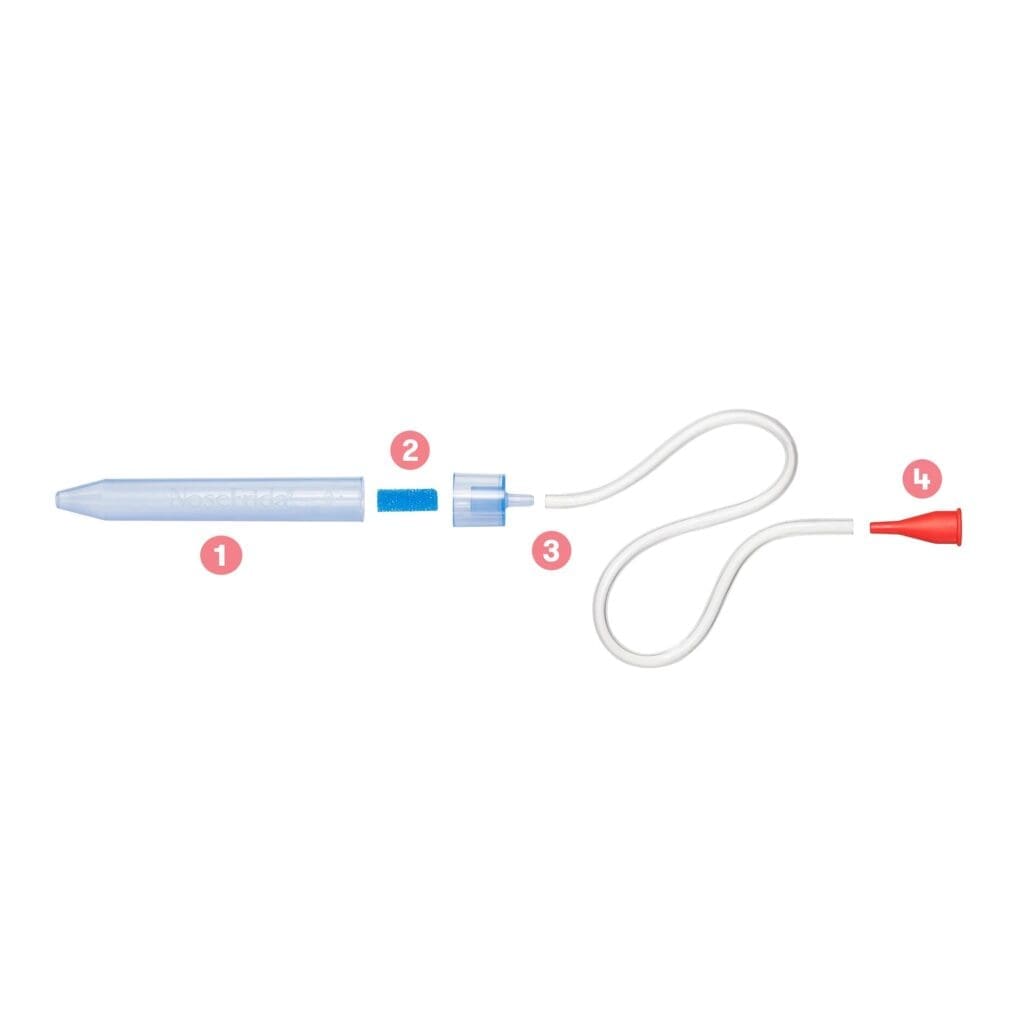
On the plus side, it’s simple to clean. The included 24 disposable filters make hygiene easy, though their ability to fully block bacteria is debatable. Replacing the filter after each use is recommended.
Overall, it’s an effective, no-frills option that’s straightforward to operate and gets the job done when your baby needs relief.
Electric NoseFrida (Last place)
- Type: Tube-style, mouth-powered aspirator
- Rating: 2/5
- Pros:
- Electric aspirator with multiple suction levels
- Adjustable suction strength
- USB-rechargeable and portable
- Includes light to distract baby
- Great for newborns, gentle suction
- No direct contact using parent’s mouth
- Cons:
- Can be noisy, especially on high settings
- Requires charging
- Suction is less than manual options

This option can be a good choice for newborns, as the suction is gentler than many other aspirators. It offers three levels, all of which are mild and unlikely to cause discomfort.
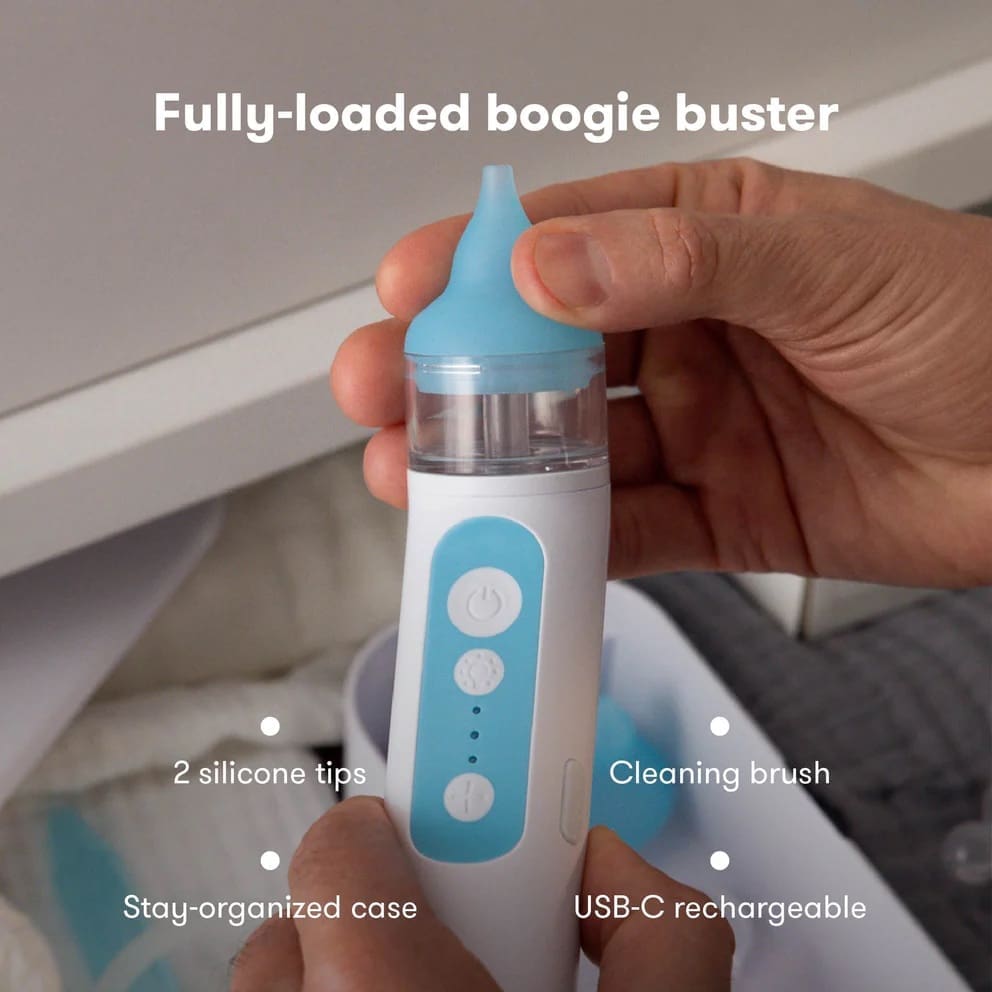
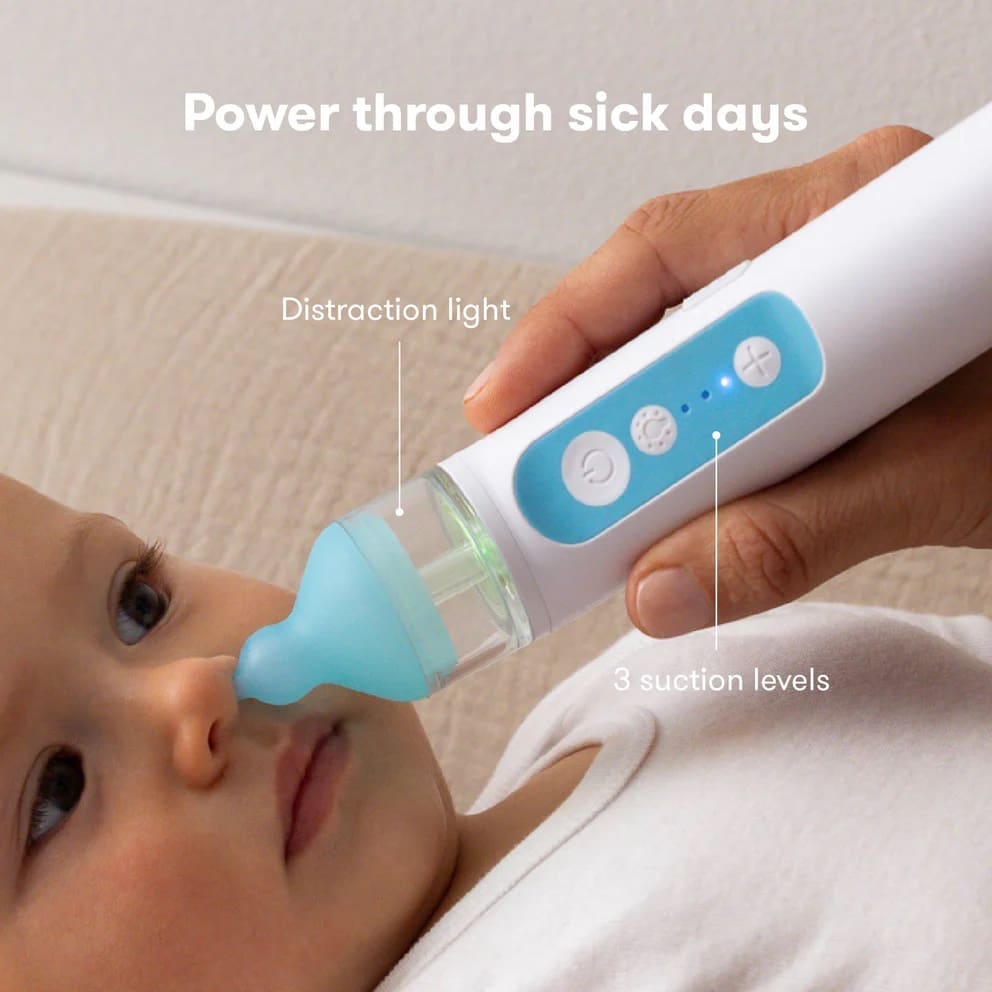
The parts are easy to clean, and it comes with a storage box and small cleaning brushes for the tiny suction holes in the silicone head. A bonus for many parents—there’s no mouth suction required, so there’s no risk of accidental contact with mucus.
That said, the design has a significant flaw. The unit has two main attachments to the battery section: the silicone tip and the plastic collection chamber. Inside the collection chamber is a small air hole that creates suction, which then feeds through the main body to a pinhole that expels air. With thick, heavy mucus, it’s common for snot to get pulled into that small air hole and into the motor area. This not only risks shooting mucus out the side air hole while in use, but also makes it impossible to clean out the interior properly. Over time, this buildup can cause a rattling noise and affect performance. In my case, I believe it’s what caused the unit to stop working—despite emptying the collection chamber frequently and never letting it overfill.
The company does say this happens, and provided a solution, however, no matter how much water I ran through it, it continued to have the rattle. They said, “not to worry, this can happen. You need to place the tip of the unit into a cup of warm water and run the aspirator. This will clear the chamber and solve the issue. Click here or view our attachment for additional troubleshooting tips for you. If you run into any problems, please let us know.”
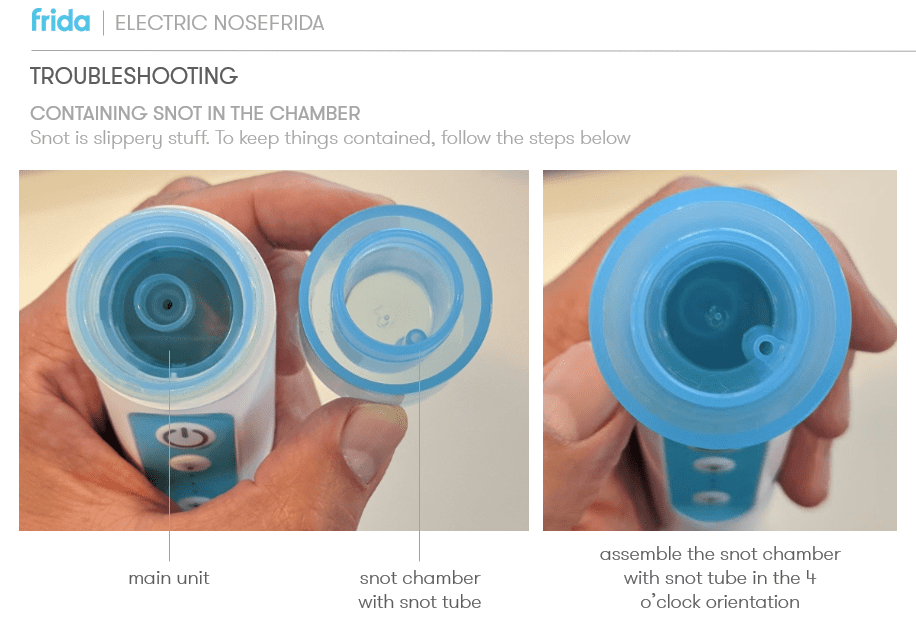
Hand-Pump Nasal Aspirator (🏆 Winner)
- Type: Manual hand-pump with collection chamber
- Rating: 4.5/5
- Pros:
- Precise suction control—you set the pressure, from gentle to strong, based on how quickly you squeeze
- Easy to clean and fully reusable
- No batteries, no filters needed
- One of the least expensive options on the market
- Strongest suction
- Cons:
- Requires two hands (arguably three with a squirmy baby) to use efficiently
- The tip that comes in contact with the nose is quite large, hard to establish a seal

This aspirator delivers the strongest suction of any I’ve tried and is highly effective for clearing heavy congestion. It’s simple to operate— the suction comes from squeezing the hand pump, and all parts fully disassemble for thorough cleaning. There’s no mouth contact involved, and it works well even with thick mucus.
The main drawback is the tip design. It’s made of hard plastic and fairly large, which can make it difficult to create a seal on a baby’s nose, especially for newborns. With a very wiggly baby, it can feel like you need multiple hands: one to hold the tip in place, one to pump, one to keep their hands out of the way, and one to steady their head. I did find another brand on Amazon that does supply a silicon tip, for newborn use if that is desired.
Final Thoughts: Why the Hand-Pump Wins
Simply put, it works the best. It clears congestion quickly, gives you full control over suction strength, and is easy to clean. In the middle of a sleepless night with a congested baby, that’s exactly what you need.
Other Recommendations For A Congested Baby
Use saline drops or spray.
I cannot recommend this enough and use each type for different situations.
- Saline Drops – Best for mild congestion or when you just need to loosen a little mucus. They’re gentle, less overwhelming for younger babies, and often trigger a sneeze that naturally clears the nose.
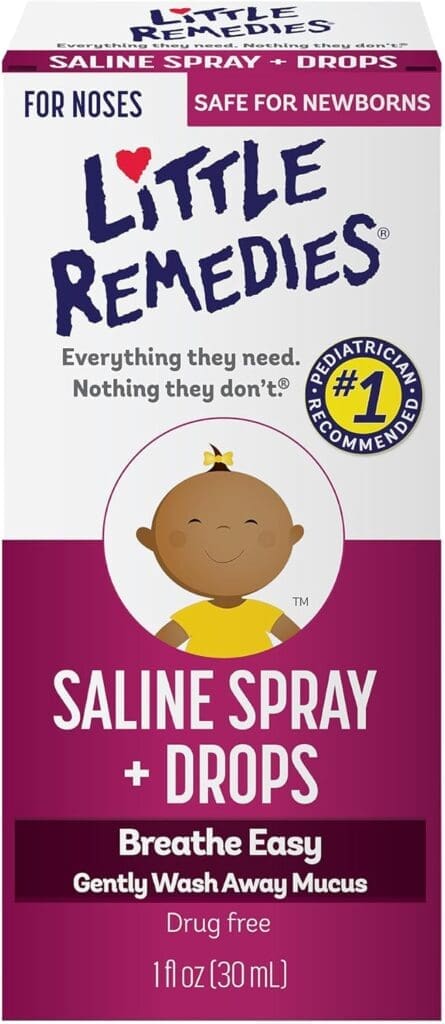
- Saline Spray – Better for more severe congestion. The fine mist coats the nasal passages more thoroughly, helping to break down thicker mucus and flush the mucus out.

Run a Cool-Mist Humidifier With Essential Oils:
A cool-mist humidifier adds moisture to the air, helping keep nasal passages from drying out and making it easier for mucus to move. This can be especially helpful overnight, when congestion often feels worse.
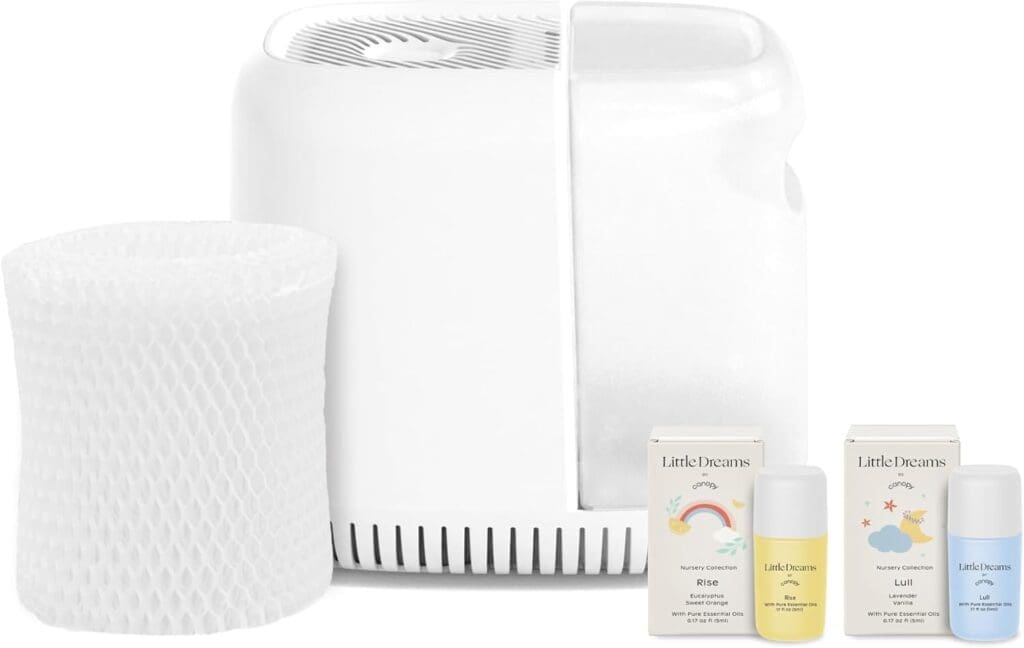
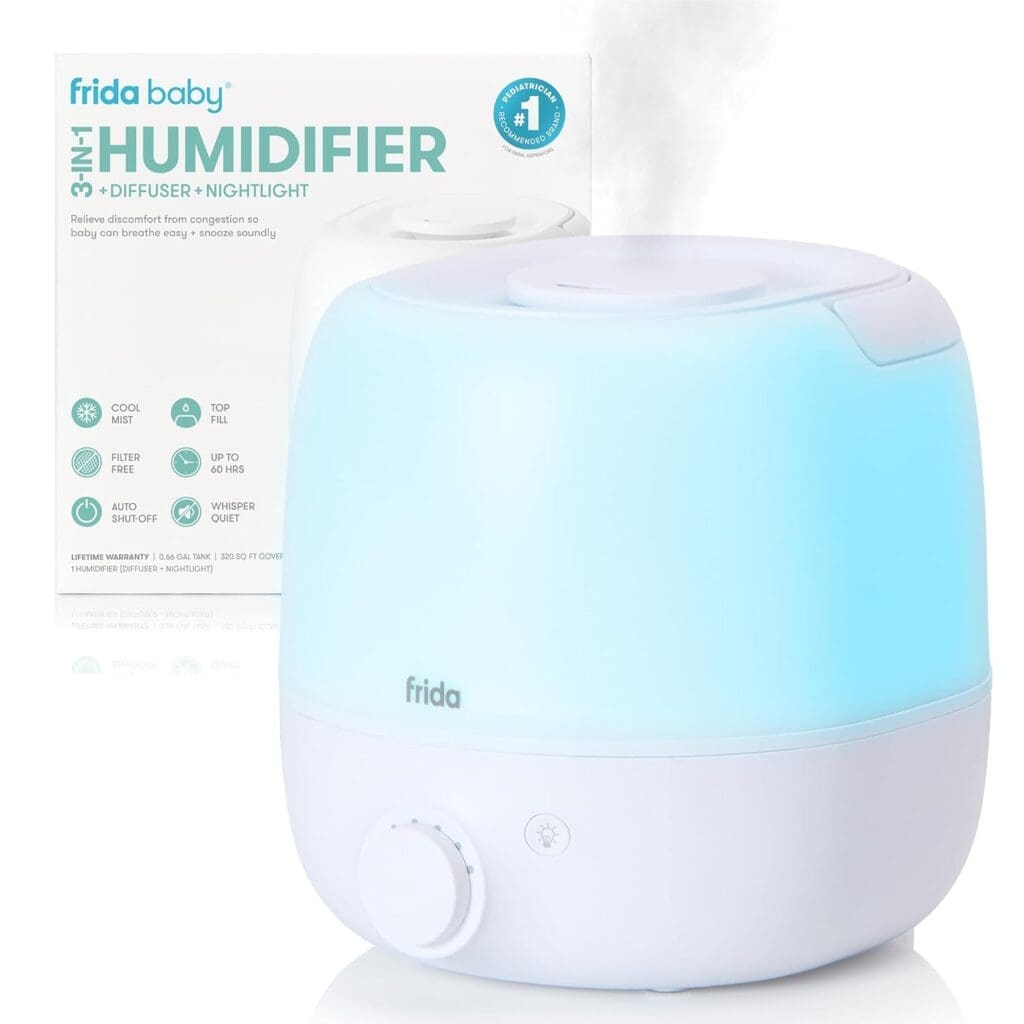
If you choose to use essential oils, always confirm they’re safe for children and follow proper dilution guidelines—many are not recommended for babies under 6 months. I personally diffuse Doterra’s Lavendar and Eucalyptus in my baby’s room. I also use their Breathe blend as well, it’s ah-may-zing and extra effective.
Try Steam from the Shower
Steam from a warm shower adds moisture to the air, which helps thin and loosen mucus in the nasal passages. The warmth relaxes swollen tissues, making it easier for congestion to drain. For babies, sitting in the bathroom with the shower running (without placing them directly in the hot water) can create a safe, gentle steam environment that provides temporary relief and makes it easier to clear their nose afterward.
Safety tip: Always keep your baby away from direct hot water or excessively hot steam to avoid burns or overheating. Sit at a comfortable distance from the shower, and limit steam sessions to a few minutes at a time.
Use a Baby-Safe Chest Rub.
Products like Maty’s Baby Chest Rub or Tubby Todd: Formulated for babies three months and older, this soothing chest rub uses gentle, natural ingredients (eucalyptus, lavender, and chamomile) to help ease congestion and promote restful sleep. It’s non-GMO, petroleum-free, and menthol-free, making it a cleaner alternative to traditional vapor rubs. The scent is mild yet comforting, and the texture spreads easily without leaving a too greasy residue.
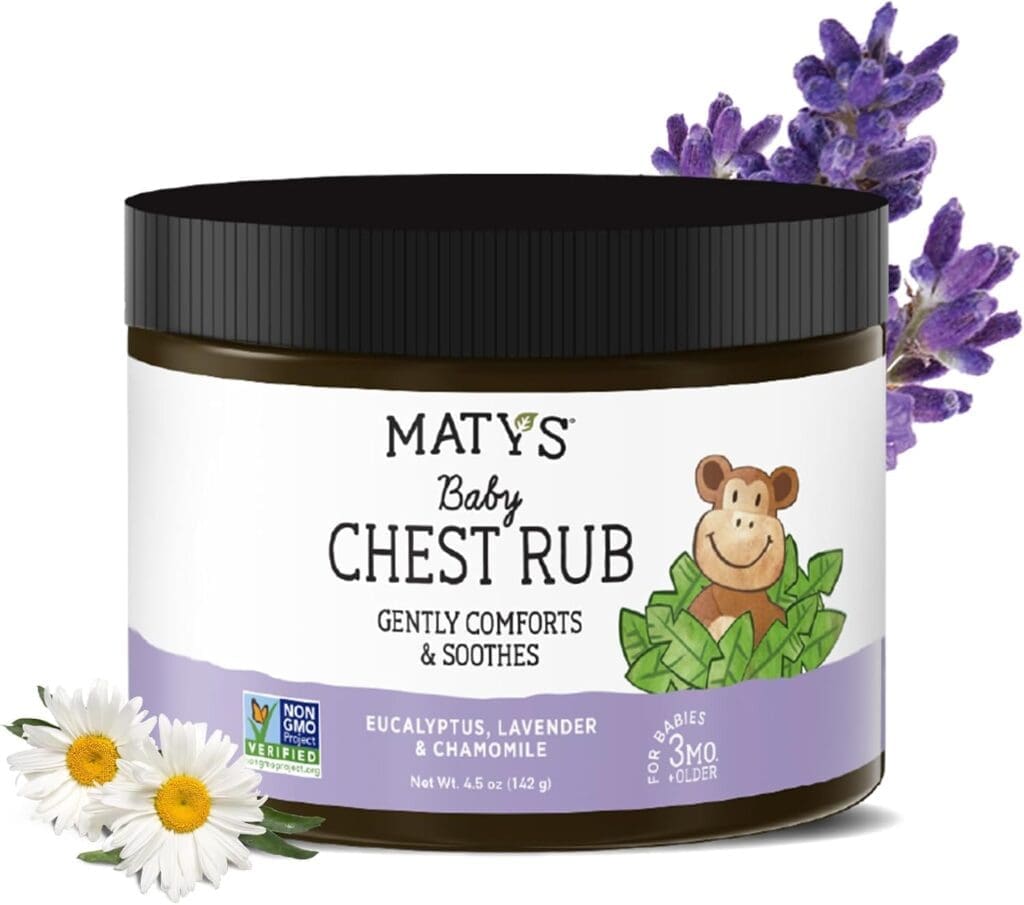
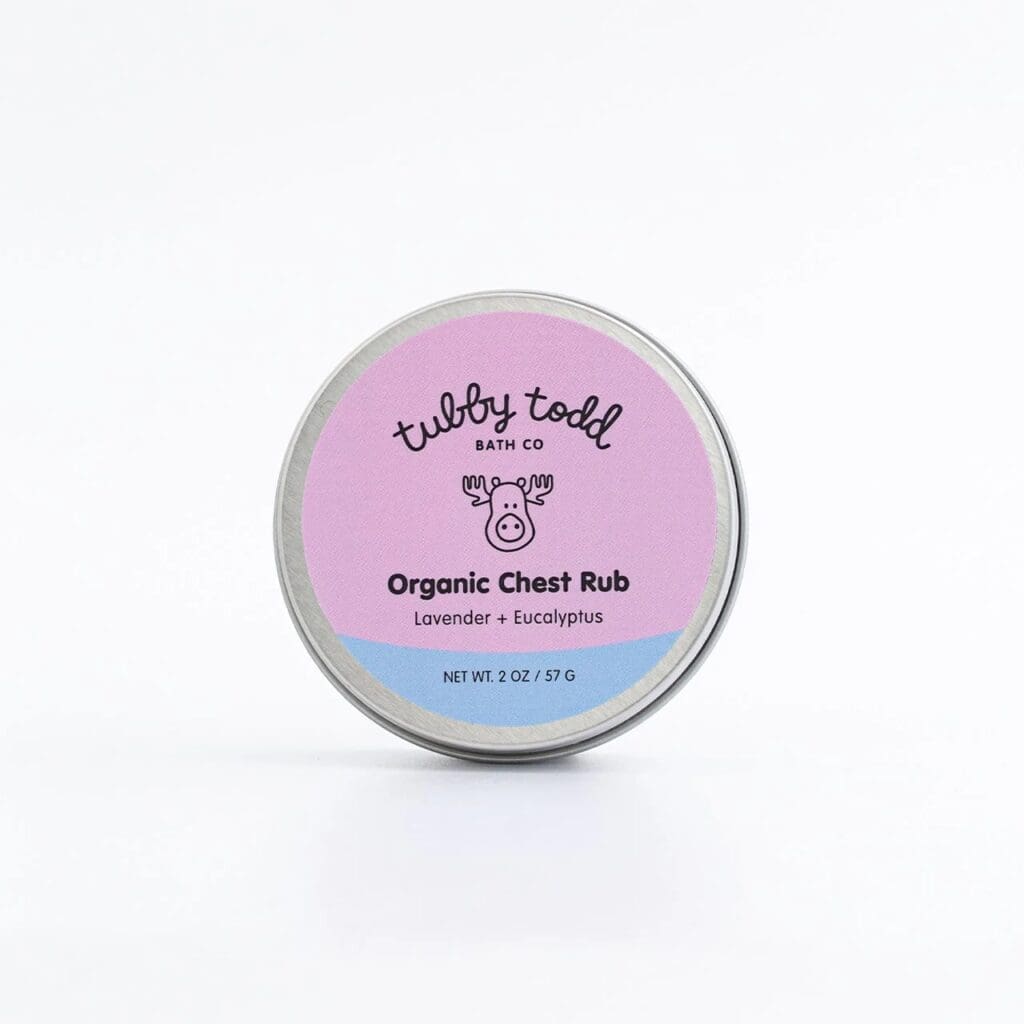
Best for: Bedtime or naps when mild congestion is making it harder to settle.
Keep Baby Upright During Awake Time
When congestion makes it hard for a baby to lie flat, it can be tempting to prop them up for easier breathing. The safest approach is always to follow safe sleep guidelines— babies should sleep on a flat, firm surface in their crib or bassinet, without loose items or incline devices.
For supervised naps or short rest periods while you’re awake, you can keep your baby upright in your arms, in a baby carrier, or in an approved infant seat. Rocking chairs, gliders, or holding them in a semi-upright position can provide temporary relief until you’re able to clear their nose.
Tip: Use this upright time strategically. Pair it with saline spray, suction, or a few minutes in a steamy bathroom to help clear their nasal passages before transitioning back to their crib.
Keep Them Hydrated
If your baby is breastfeeding or formula-feeding, offer feeds more frequently. Fluids help thin mucus from the inside out and prevent dehydration. This is especially important if they’re losing fluids through a runny nose or fever.
It Will End
It’s incredibly hard to see your baby uncomfortable and struggling to breathe. My pediatrician always reminds me that the first 2–4 days are usually the worst, and then symptoms start to ease. You’re doing everything you can, and both you and your baby will get through this. You can do it.
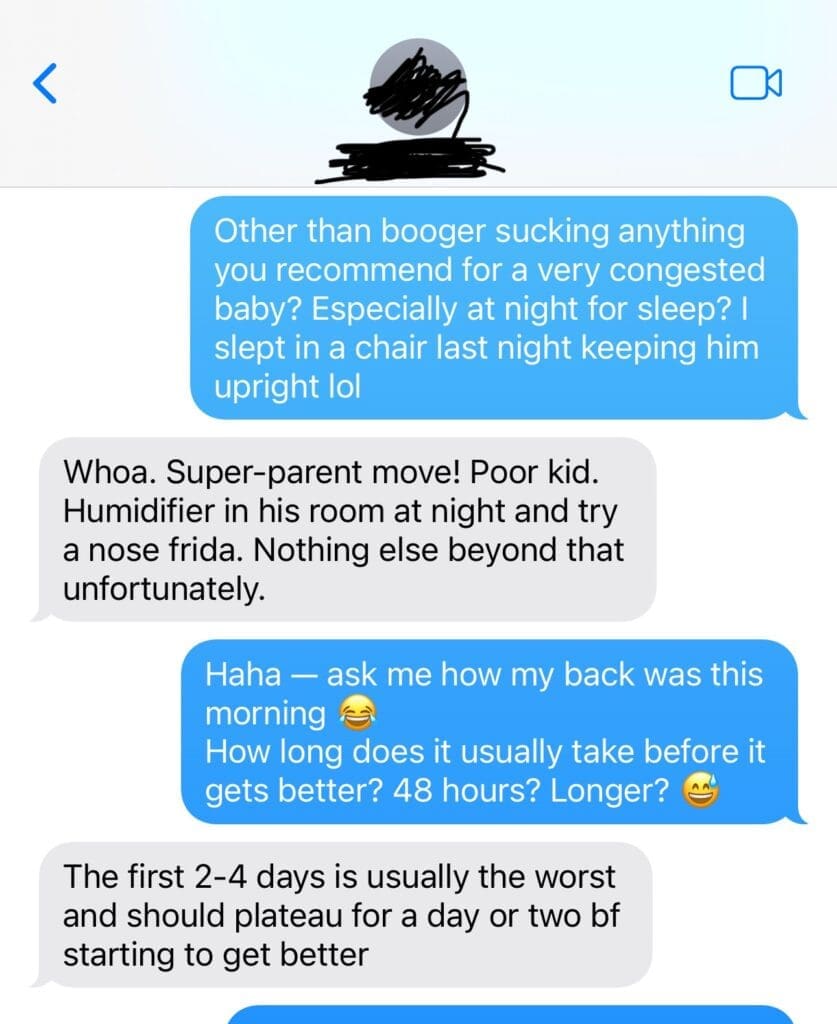
Disclosure: This is a review blog which may get compensated for the products reviewed by the companies who produce them. All of the products are tested thoroughly and I only endorse products I believe in. I am an independent blogger and the reviews are done based on my own opinions.
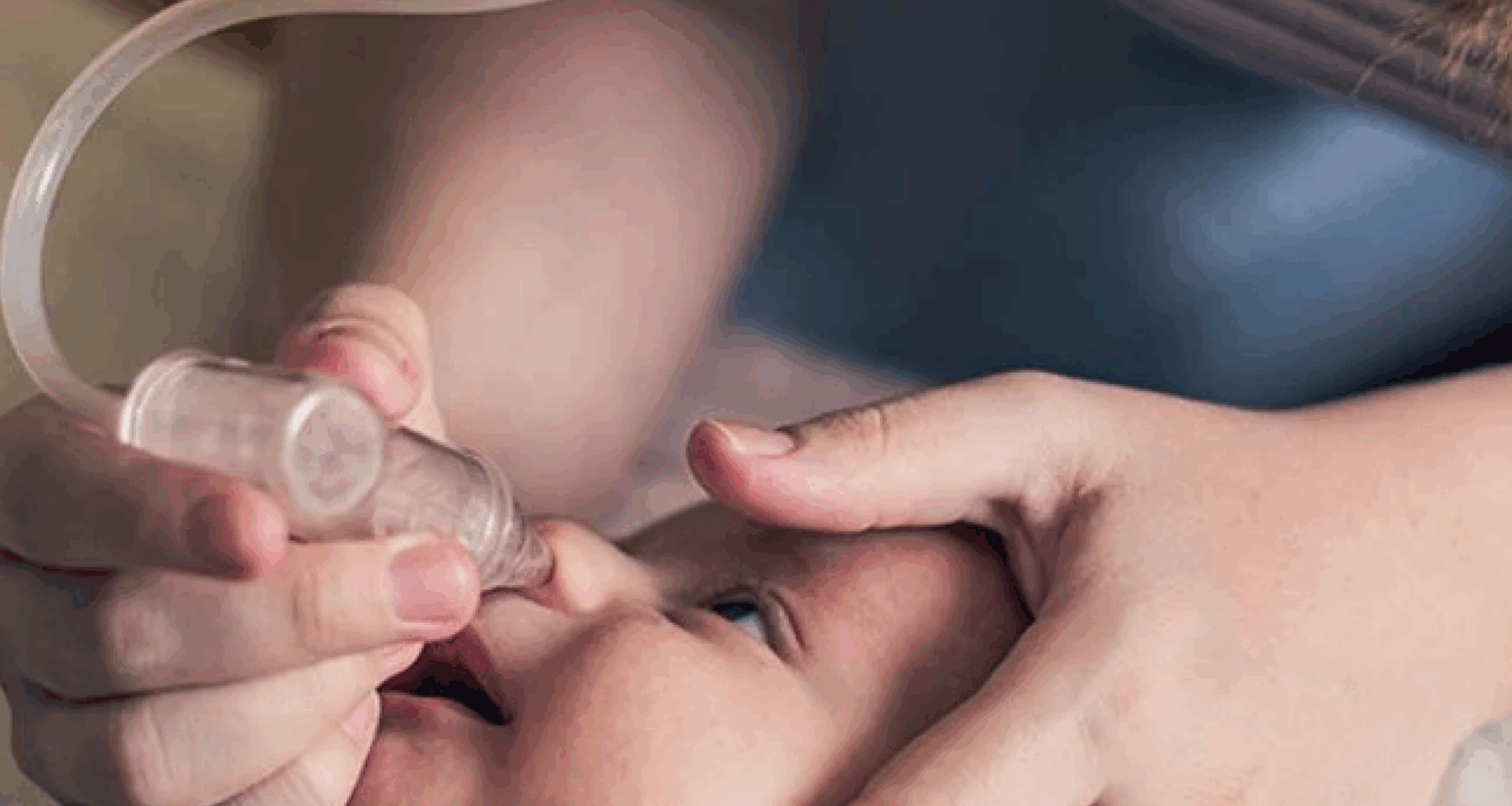
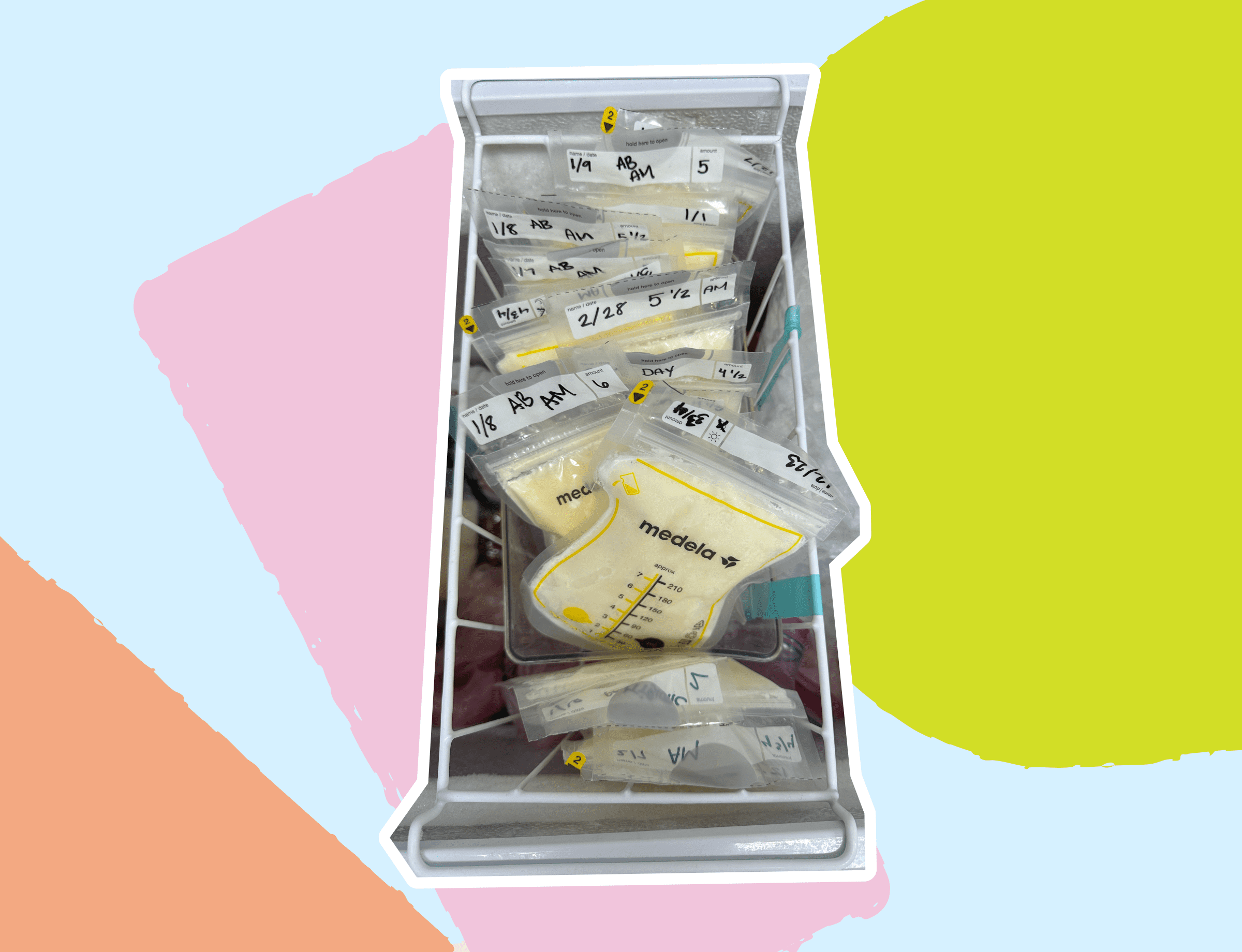
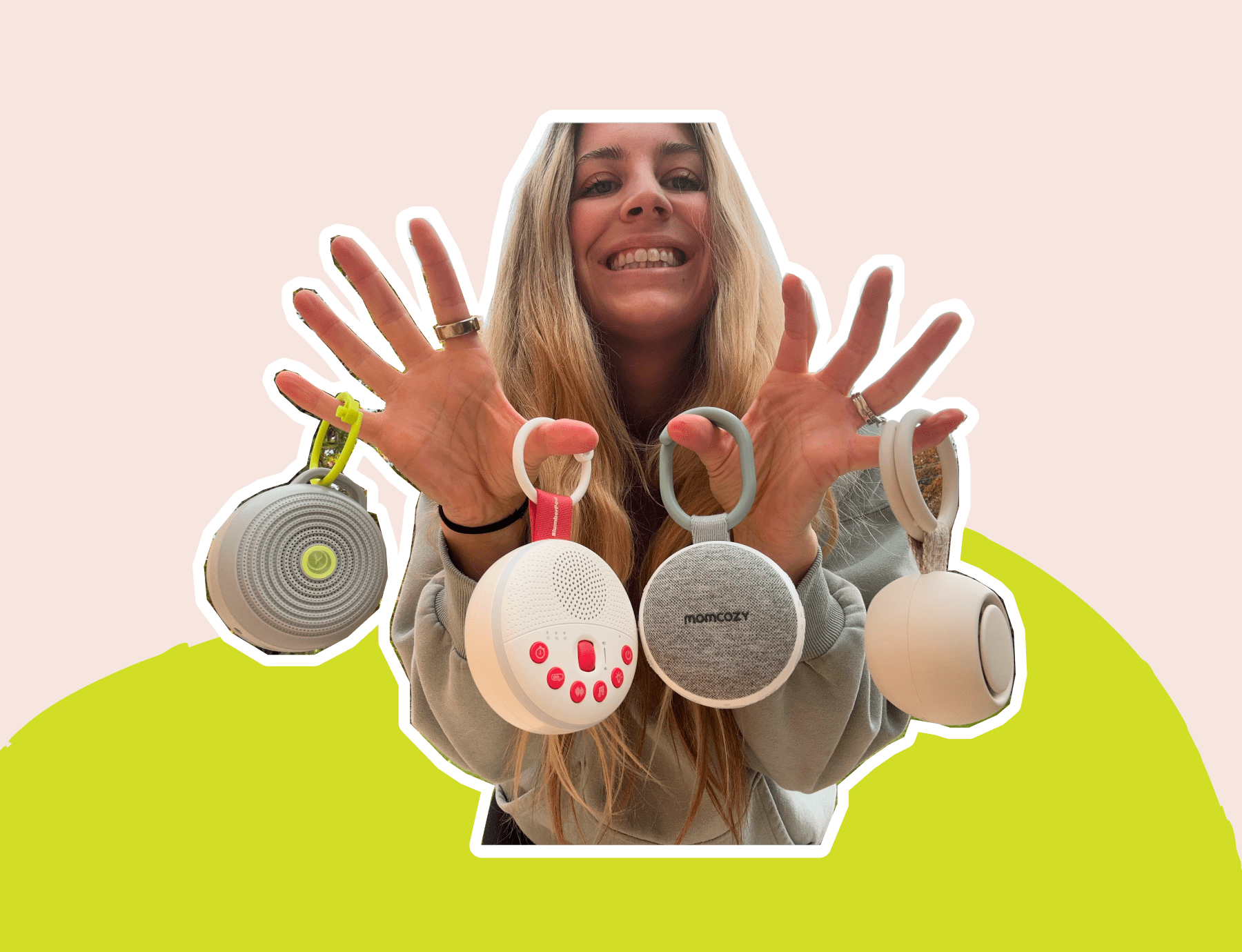

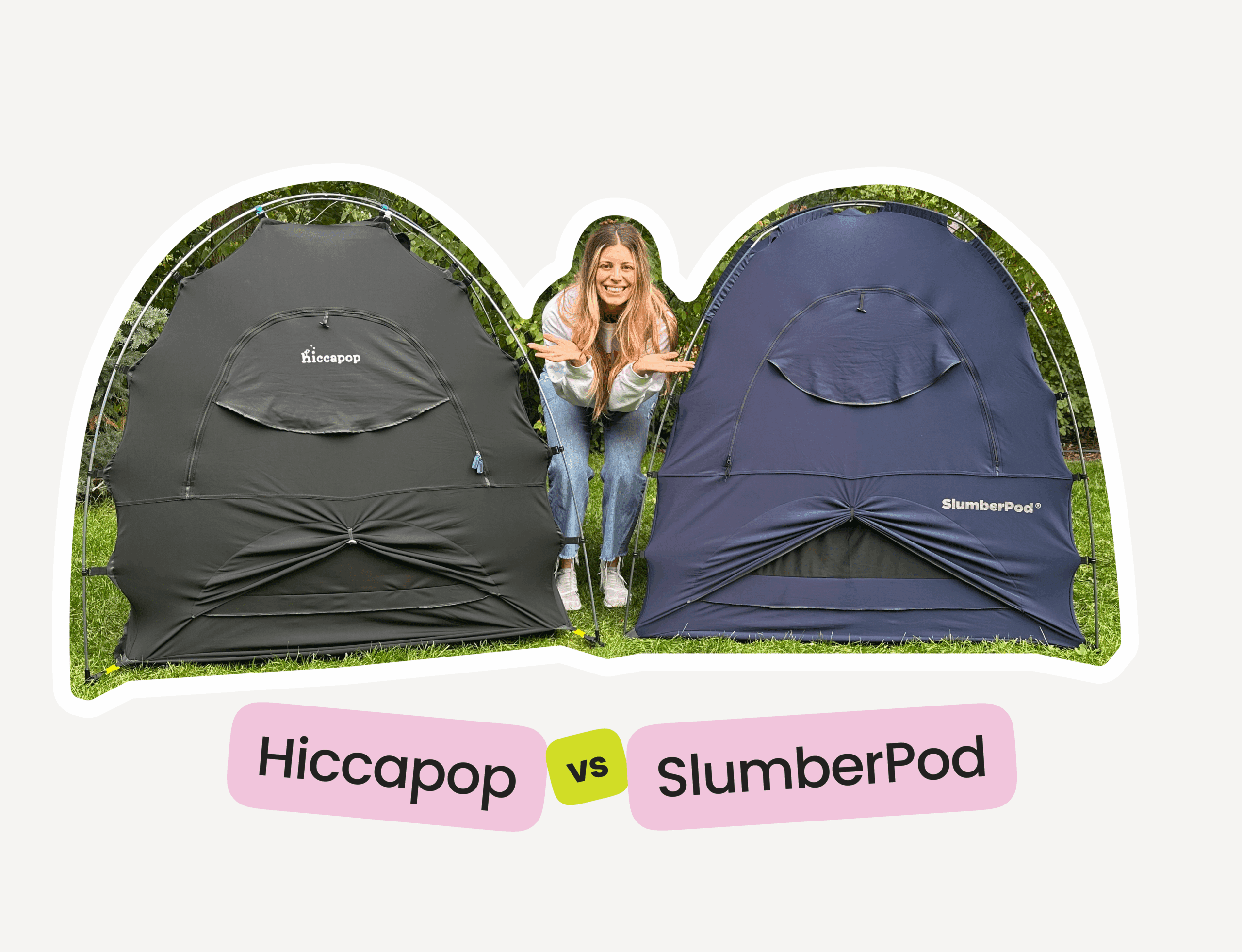

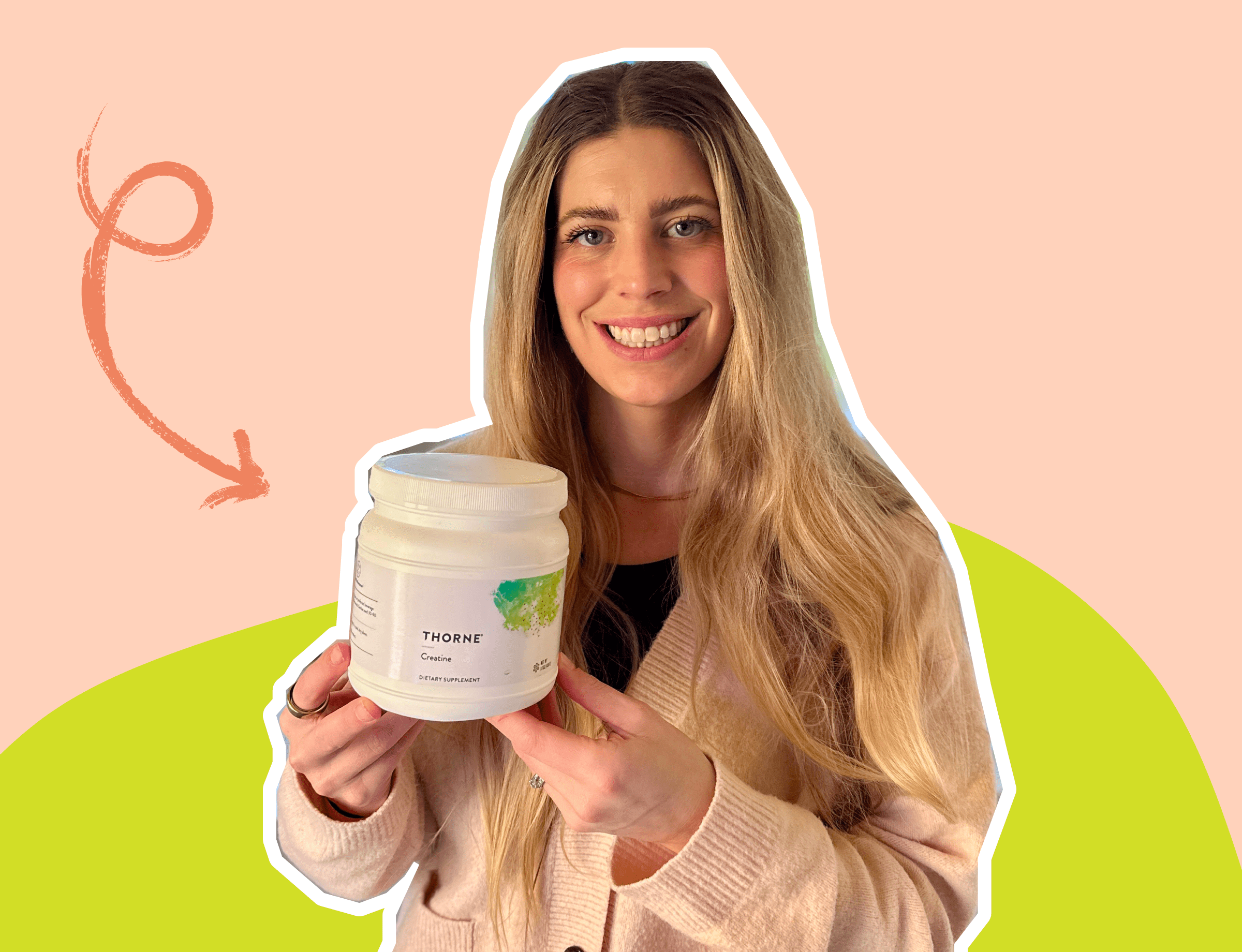
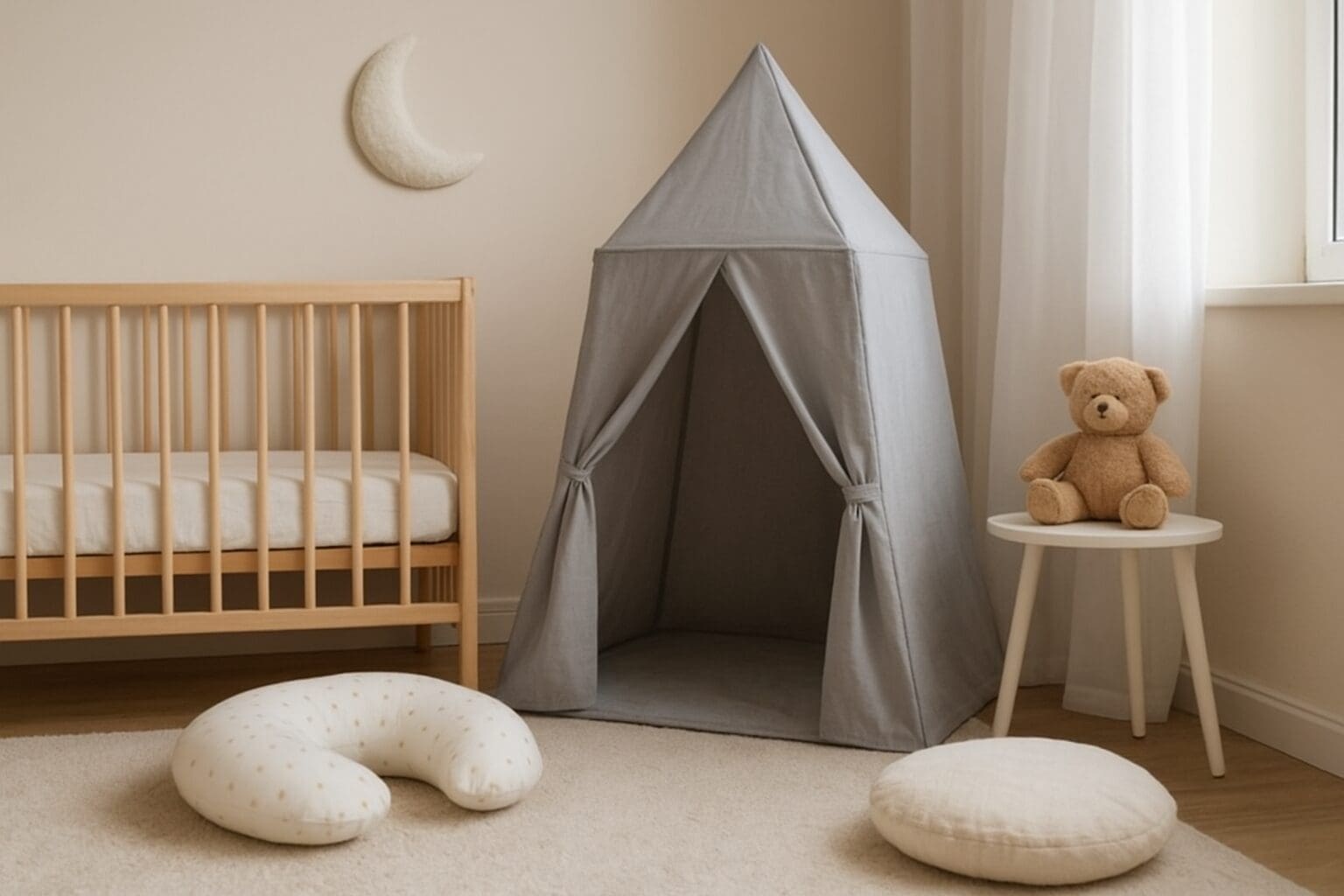
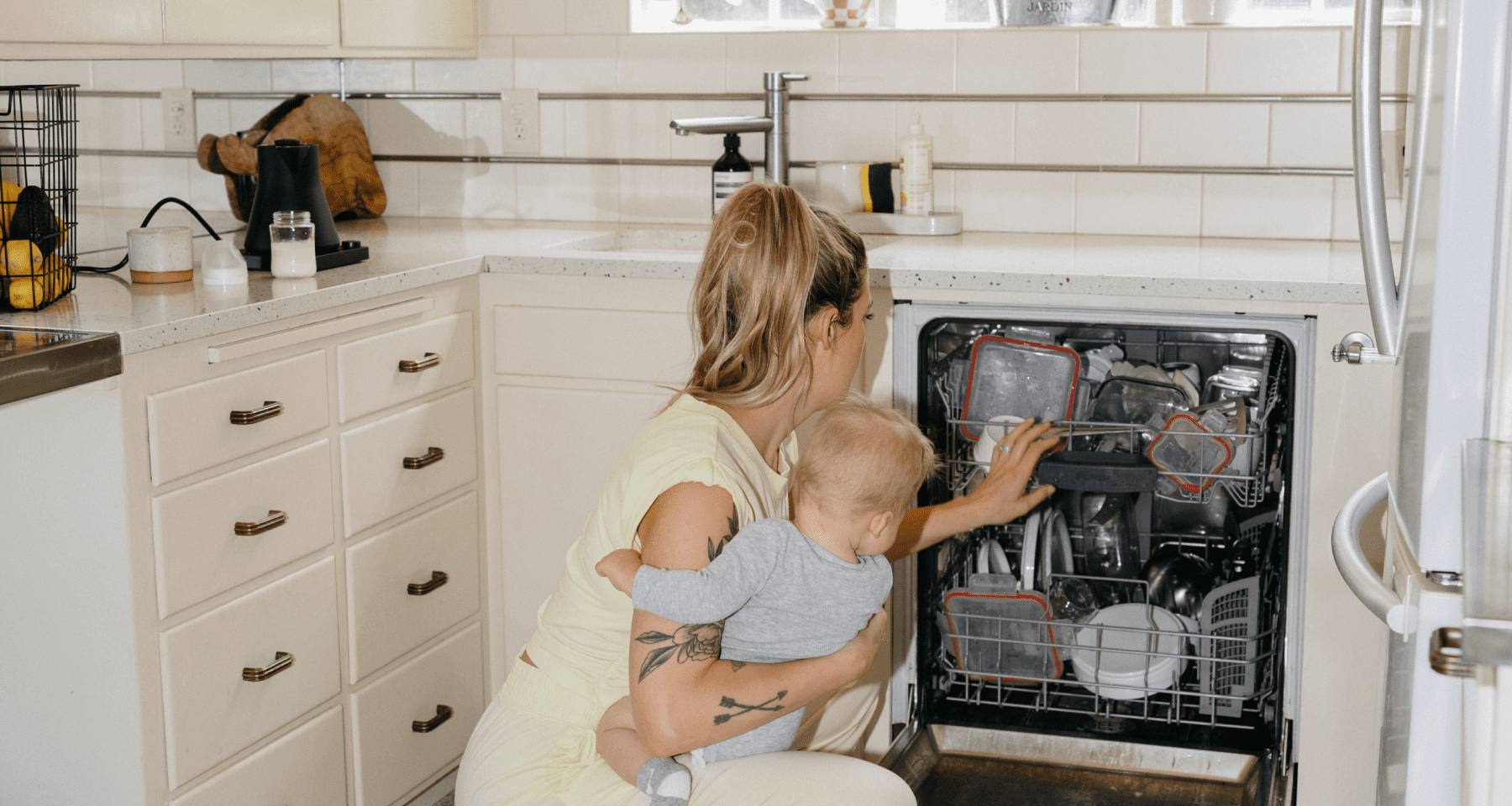

View comments
+ Leave a comment